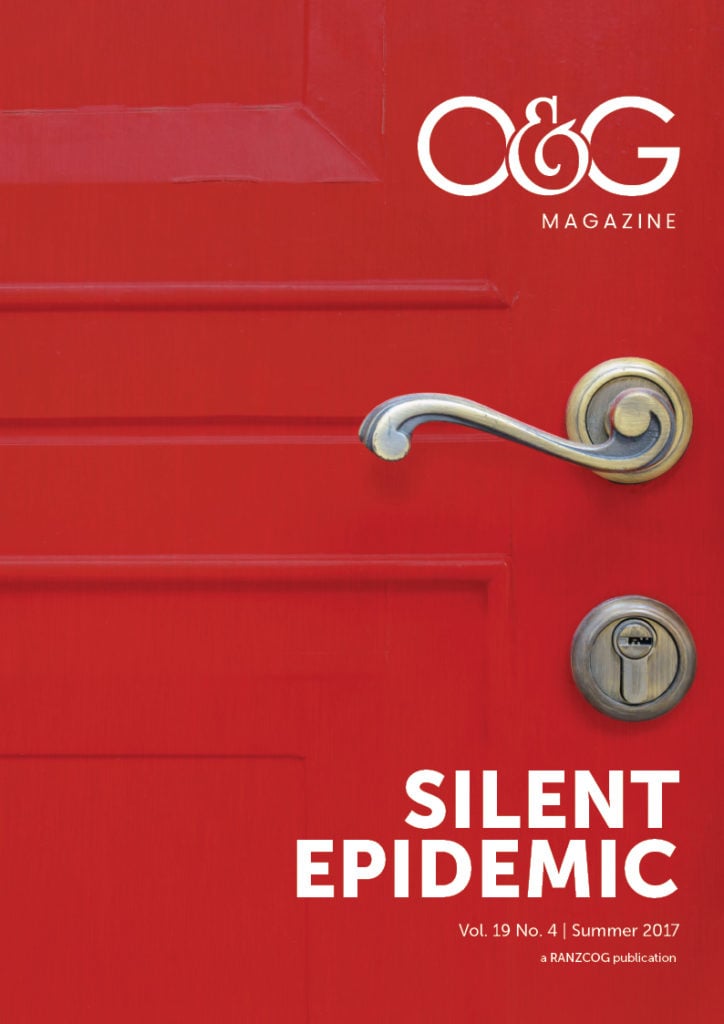Family violence is the brutal reality for far too many New Zealanders, with evidence indicating some of the highest rates of domestic abuse in the developed world.1 Increasingly, the connection is also being made between intimate partner violence and child maltreatment.2 Giving expert evidence at the recent inquest regarding a child homicide, Judge Becroft, New Zealand’s Children’s Commissioner, maintained we have a ‘dark side’ to our country, reflected in the high rates of youth suicide, domestic violence, and child, drug and alcohol abuse.3 Given these high rates of violence against women and children in New Zealand, what steps have been taken by health services in an effort to help address these disturbing figures?
Policy and program development
Described as one of the Ministry of Health’s flagship programs, the Violence Intervention Programme (VIP) as we know it today began in 2001. Selected District Health Boards (DHB) established pilot programs supported by the 2002 Ministry of Health Family Violence Intervention Guidelines: Child and Partner Abuse.4 Favouring a population health approach, the program now includes the provision of training for health professionals, public policy and education. Combined with information systems and regular evaluation, the program aims to help facilitate effective responses to those experiencing domestic violence.
In 2007 an extension to the program resourced a national VIP manager and family violence coordinators across all DHBs. Their role is to provide training, support and audit of the program in the clinical environment. The current iteration of this program is articulated in the updated Family Violence Assessment and Intervention Guideline: Child abuse and intimate partner violence.5 Published by the Ministry of Health in 2016, and implemented across all DHB at their core, is the premise that healthcare providers are well placed to help victims of domestic violence, inclusive of child abuse.
This assertion is made on the basis that the provision of routine healthcare, such as during pregnancy, injury or illness, brings the majority of the population into contact with health providers. Given that those suffering the effects of family violence seek healthcare more often than those not suffering abuse, health professionals are potentially well positioned to provide timely identification, brief interventions, support and referral onwards to people affected by domestic abuse.
Similar to the 2002 expectations, the 2016 guideline aims to provide a workable tool to assist health professionals to intervene safely and effectively in support of those that have experienced violence. Founded on fundamental ethical principles that support all healthcare practice, such as beneficence (to do good), non-malfeasance (to do no harm), autonomy and justice, the guideline describes the following six-step process:
- Routine inquiry (identification)
- Validation and support
- Health and risk assessment
- Safety planning
- Referral and follow-up
- Documentation
Emphasising the co-occurrence of partner abuse and child abuse, the guidelines promote an integrated response to addressing these issues. The overall aim of the program is to make sure that those people affected by family violence who are using health services obtain early support and that health professionals assess and intervene competently.
The foreword to the 2016 guideline persuasively argues that much has been learned during the years of program delivery and development, and that ‘the clinical knowledge, health system support and referral source links we have built mean that it is no longer acceptable for us not to respond to an issue that is of fundamental importance to the health of New Zealanders.’6 Given the program’s aims, what does the available data tell us about the challenges New Zealand continues to face in relation to the silent epidemic?
Data summary
Prevalence data published in June 2017 indicate the following: in 2016 there were 118,910 family violence investigations by New Zealand police, accounting for 41 per cent of a frontline police officers’ time. One-in-three (35 per cent) of ever-partnered women in New Zealand describe having experienced physical and/or sexual intimate partner violence (IPV). When psychological abuse is included in the statistics, 55 per cent of women report having experienced IPV in their lifetime.7
The available data from June 2012 indicate that the New Zealand police made 78,915 referrals to New Zealand’s statutory child protection agency on the grounds of exposure to family violence. This was after a national policy change in 2004 requiring police to notify the agency when children are present at family violence callouts.2
Almost half of all homicides committed in New Zealand are by an offender who has been identified as a family member. In a four-year period (2009–2012) nine children, 13 women and 10 men were killed as a result of family violence.8 Like other indigenous populations, Māori are disproportionately represented as both victims and perpetrators of family violence.9
How are we doing?
Summarised in the six-step process above, the expectations for health professionals having attended an eight-hour training program, is to undertake a routine inquiry regarding their safety at home for all women aged over 16 years. If a positive disclosure is made, the brief intervention follows. The referral pathway is likely to include either a DHB health social worker or a local specialist domestic violence service. How many of us are meeting this basic obligation?
There are positive signs of progress, (95 per cent of DHBs do have systems in place to support an efficient and safe response to domestic violence); however, the most recent internal DHB audit identifies only 45 per cent of eligible women receiving the routine enquiry mentioned above.10 A number of organisational, clinical and public perceptions are worthy of reflection when we consider this figure.
Firstly, the sustained investment by the Ministry of Health and the provision of clear professional guidelines that makes clear our obligations. More than two decades of research that demonstrate the damaging affects of exposure to domestic violence for children and poor health outcomes for women.11 In the women’s health context, there is an established link between IPV and increased spontaneous abortion and termination of pregnancy.12 Despite this compelling contextual background, more than half the time health professionals continue to shy away from our clearly articulated responsibility in relation to domestic violence.13 The final part of this article explores why this may be the case.
Asking ourselves the questions
Why is this? Is it because we don’t understand the part we must play? Do we think this is someone else’s job? Do we perceive we are too busy? Are we afraid of ripping the scab off a wound that we feel ill equipped to respond to? Do we have a lack of confidence in the program intended to respond to domestic violence? Do we fear causing offence, or scaring the patient off? Are we uncertain about to whom and how to refer? I invite all health professionals to ask ourselves these questions, and then to take active steps to attend to the specific barriers we identify that are preventing our more active engagement with this critical area of healthcare practice.
Local literature suggests that women are supportive of the questions being asked in a health context and have an expectation that health professionals will engage in a non-directive, non-judgmental way, appreciating the complexity of the situation women face, and the need to provide an individually tailored response.14 Across all health sectors we must develop our capability to respond effectively to those who are at risk. This will require us to step forward, to actively seek out opportunities to increase our capacity, and to more fully take up our share of the responsibility to help to address the silent epidemic.
References
- New Zealand Government. Family violence risk assessment and management framework. A common approach to screening, assessing and managing risk. 2017. Crown Copyright. Available from: www.justice.govt.nz/assets/Documents/Publications/family-violence-ramf.pdf.
- Murphy C, Paton N, Gulliver P, Fanslow J. Understanding the connections and relationships: Child maltreatment, intimate partner violence and parenting. New Zealand Family Violence Clearinghouse. Issues Paper 3. April 2013.
- Savage J. Moko inquest: Children’s Commissioner on the ‘dark side’ of New Zealand. NZ Herald. 3 Oct 2017. Available from: www.nzherald.co.nz/nz/news/article.cfm?c_id=1&objectid=11929178.
- Ministry of Health. Family Violence Intervention Guidelines. Child and Partner Abuse. 2002. Available from: www.moh.govt.nz/notebook/nbbooks.nsf/0/C1A20FAA3DCAA762CC256C8B006973A9/$file/family-violence.pdf.
- Fanslow JL, Kelly P. Family Violence Assessment and Intervention Guideline: Child abuse and intimate partner violence (2nd ed). 2016. Wellington: Ministry of Health.
- Fanslow JL, Kelly P. Family Violence Assessment and Intervention Guideline: Child abuse and intimate partner violence (2nd ed). 2016. Wellington: Ministry of Health.
- New Zealand Family Violence Clearing House Data Summaries: Snapshot June 2017.
- Are you ok website. areyouok.org.nz/family-violence/statistics/. 2017. Ministry of Social Development.
- Dobbs T, Eruera M. Kaupapa Maori wellbeing framework: The basis for whanau violence prevention and intervention. New Zealand Family Violence Clearinghouse. Issues Paper 6. April 2014.
- Koziol-McLain J, McLean C, Garret N. Hospital responsiveness to family violence: 108 month follow-up evaluation. 2013. Interdisciplinary Trauma Research Centre. Auckland.
- New Zealand Government. Family violence risk assessment and management framework. A common approach to screening, assessing and managing risk. 2017. Crown Copyright. Available from: www.justice.govt.nz/assets/Documents/Publications/family-violence-ramf.pdf.
- Fanslow J, Silva M, Whitehead A, Robinson E. Pregnancy outcomes and intimate partner violence in New Zealand. ANZJOG. 2008;48(4):391-7.
- Koziol-McLain J, McLean C, Garret N. Hospital responsiveness to family violence: 108 month follow-up evaluation. 2013. Interdisciplinary Trauma Research Centre. Auckland.
- Kziol-McLain J, Giddings L, Rameka M, Fyfe E. Intimate partner violence screening and brief intervention: Experiences of women in two New Zealand health care settings. J Midwifery Womens Health. 2008;53(6):504-10.






Leave a Reply